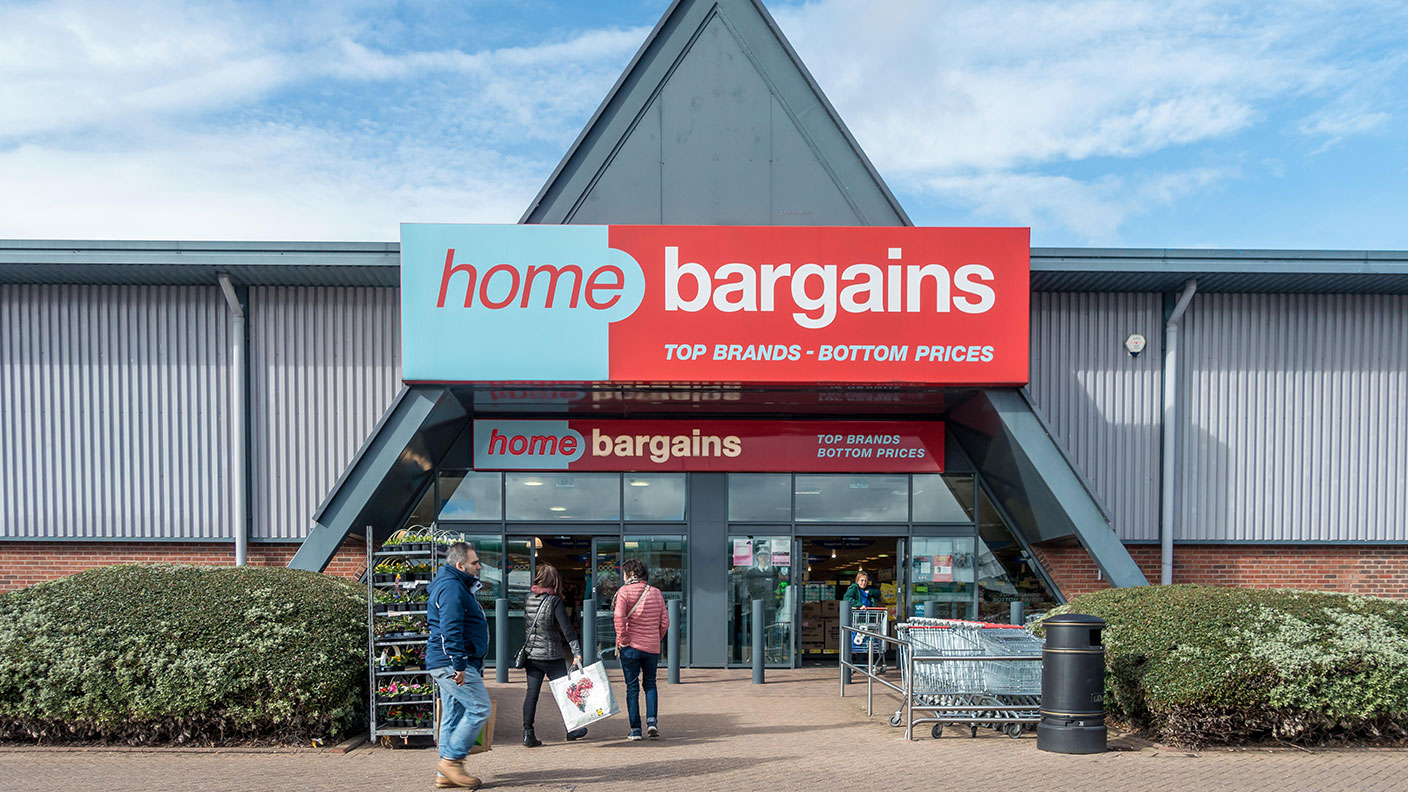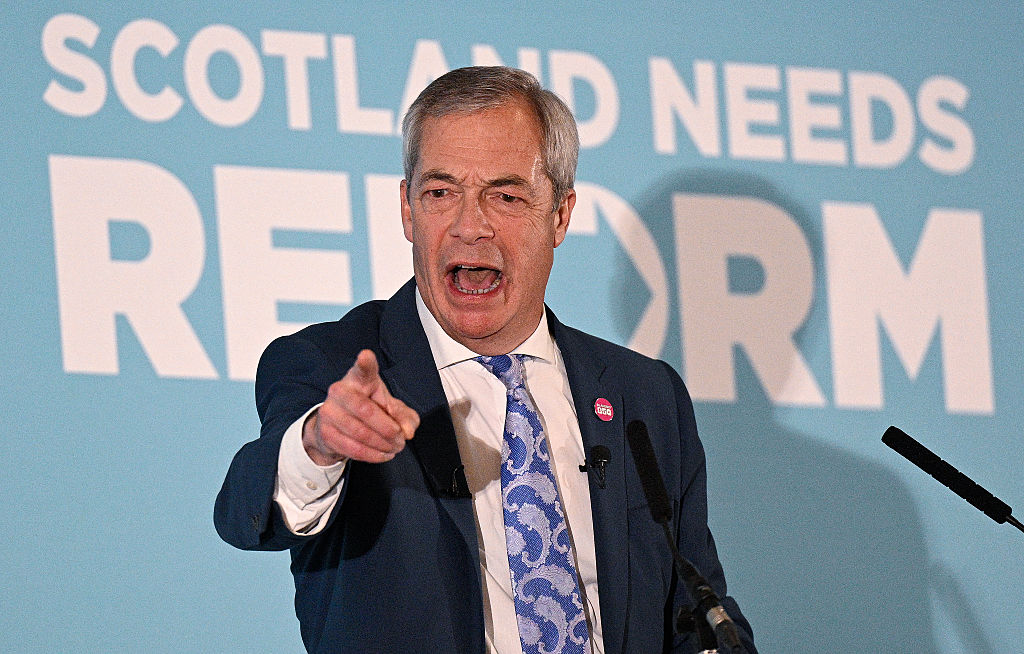Tom Morris: the rise of Home Bargains and the lure of the treasure hunt
Despite the digital revolution, piling it high and selling it cheap on the high street remains a profitable strategy. Ask Tom Morris and family, now worth more than Philip Green and Mike Ashley combined.

The pandemic is often said to have spelled curtains for high-street chains failing to keep pace with the digital revolution. But there are still fortunes to be made “by piling it high and selling it cheap,” says The Times. The rise of so-called variety discounters – selling everything from homewares to toys, tools, toiletries and food at knockdown prices – is one of the unsung retail stories of the past decade, as the rapid growth of Home Bargains has shown.
Doddy’s rummages
The shift has proved lucrative for the chain’s low-key Liverpudlian founder, Tom Morris, and his family – now reckoned to be worth more than retail tycoons Philip Green and Mike Ashley combined. Indeed, you might say that Home Bargains is “one of the biggest things to come out of Liverpool since the Beatles”, says The Guardian. But if Morris is now worth some £4.1bn, he doesn’t flaunt it. True, there’s a private jet, with M-ORIS spelled out on the tail. But the family are described as “down-to earth” people, who “would not want to alienate their customers and staff by living a flashy lifestyle”. Even celebrity customers have bought into this ethos. An early fan of Home Bargains, which has now grown into 500 stores across Britain, was the late comedian Ken Dodd who, as the Liverpool Echo noted in 2016, “would often make the trip from his home in Knotty Ash to stock up on life’s essentials. Legend has it he would rummage to the bottom of the toilet-roll basket to make sure he got the biggest for his money”.
Shopkeeping runs in Morris’s blood. Born in 1954 into a family of seven children, his father, Tom senior, ran a store called V’s – named after his wife Veronica and standing for “value”. Tom junior was just 21 when he opened a shop of his own in the Old Swan area of Liverpool. As the chain expanded several siblings joined in, says The Times. One brother, Joe, runs operations and acts as Tom’s spokesman; another, Ed, designed the computer systems; a third brother, graphic designer Anton, devised the company’s red and blue logo. But Tom still owns 90% of the business.
MoneyWeek
Subscribe to MoneyWeek today and get your first six magazine issues absolutely FREE

Sign up to Money Morning
Don't miss the latest investment and personal finances news, market analysis, plus money-saving tips with our free twice-daily newsletter
Don't miss the latest investment and personal finances news, market analysis, plus money-saving tips with our free twice-daily newsletter
The chain’s mantra is “top brands at bottom prices”. Indeed, the Morris philosophy is simple: “If we can’t sell it cheaper than the competition, we wouldn’t sell it,” Joe once observed. Tom himself is credited as “a canny buyer who negotiates hard” and he has built the business “prudently”. A preference for freehold store ownership means Home bargains has £741m of property on its balance sheet and little long-term debt.
Filling Woolworths’ shoes
Having established itself as a haven for Merseysiders on a budget, the catalyst for Home Bargains’s growth was the 2008 financial crisis, “which opened the eyes” of Britons “from all income groups to the bargains to be had in discount stores”, says The Guardian. The demise of Woolworths soon after left a big gap that needed filling. “A lot of people are time-rich, money-poor and shop around” – all truer than ever thanks to the pandemic. What also drives footfall, as retail consultant Anna Thal Larsen of Bain & Company recently told the Financial Times, is the lure of the “treasure hunt”: what special deals are on this week?
As the group plots expansion, investment banks have been knocking on the door, keen to sell the idea of a float. So far, they’ve been rebuffed. But international expansion has long been mooted, says the Liverpool Echo. “It can’t be too long now before the trendiest types on the Champs-Élysées” are stocking up “on bleach and biscuits on their way home from café society”.
Get the latest financial news, insights and expert analysis from our award-winning MoneyWeek team, to help you understand what really matters when it comes to your finances.
Jane writes profiles for MoneyWeek and is city editor of The Week. A former British Society of Magazine Editors editor of the year, she cut her teeth in journalism editing The Daily Telegraph’s Letters page and writing gossip for the London Evening Standard – while contributing to a kaleidoscopic range of business magazines including Personnel Today, Edge, Microscope, Computing, PC Business World, and Business & Finance.
She has edited corporate publications for accountants BDO, business psychologists YSC Consulting, and the law firm Stephenson Harwood – also enjoying a stint as a researcher for the due diligence department of a global risk advisory firm.
Her sole book to date, Stay or Go? (2016), rehearsed the arguments on both sides of the EU referendum.
She lives in north London, has a degree in modern history from Trinity College, Oxford, and is currently learning to play the drums.
-
 ‘Why I have ditched my Help to Buy ISA for cash savings and the stock market’
‘Why I have ditched my Help to Buy ISA for cash savings and the stock market’Without the 25% bonus, my Help to Buy ISA is effectively redundant, says MoneyWeek writer Sam Walker.
-
 Is your inheritance tax allowance cut if you sell to downsize or sell your home to pay for care?
Is your inheritance tax allowance cut if you sell to downsize or sell your home to pay for care?Downsizing relief is a little-known benefit that could save your loved ones tens of thousands of pounds in inheritance tax after you’ve died.
-
 Luana Lopes Lara: The ballerina who made a billion from prediction markets
Luana Lopes Lara: The ballerina who made a billion from prediction marketsLuana Lopes Lara trained at the Bolshoi, but hung up her ballet shoes when she had the idea of setting up a business in the prediction markets. That paid off
-
 Who is Christopher Harborne, crypto billionaire and Reform UK’s new mega-donor?
Who is Christopher Harborne, crypto billionaire and Reform UK’s new mega-donor?Christopher Harborne came into the spotlight when it emerged he had given £9 million to Nigel Farage's Reform UK. How did he make his millions?
-
 Why Trustpilot is a stock to watch for exposure to the e-commerce market
Why Trustpilot is a stock to watch for exposure to the e-commerce marketTrustpilot has built a defensible position in one of the most critical areas of the internet: the infrastructure of trust, says Jamie Ward
-
 The return of Erik Prince, America's notorious mercenary
The return of Erik Prince, America's notorious mercenaryErik Prince, founder of the controversial private military group Blackwater, was shunned for pushing the boundaries of legality. He has re-established himself
-
 Big Short investor Michael Burry closes hedge fund Scion Capital
Big Short investor Michael Burry closes hedge fund Scion CapitalProfile Michael Burry rightly bet against the US mortgage market before the 2008 crisis. Now he is worried about the AI boom
-
 Chen Zhi: the kingpin of a global conspiracy
Chen Zhi: the kingpin of a global conspiracyChen Zhi appeared to be a business prodigy investing in everything from real estate to airlines. Prosecutors allege he is the head of something more sinister
-
 Who is Jared Isaacman, SpaceX astronaut and Trump's pick as NASA chief?
Who is Jared Isaacman, SpaceX astronaut and Trump's pick as NASA chief?Jared Isaacman is a close ally of Elon Musk and the first non-professional astronaut to walk in space. Now, he is in charge of NASA
-
 Defeat into victory: the key to Next CEO Simon Wolfson's success
Defeat into victory: the key to Next CEO Simon Wolfson's successOpinion Next CEO Simon Wolfson claims he owes his success to a book on military strategy in World War II. What lessons does it hold, and how did he apply them to Next?